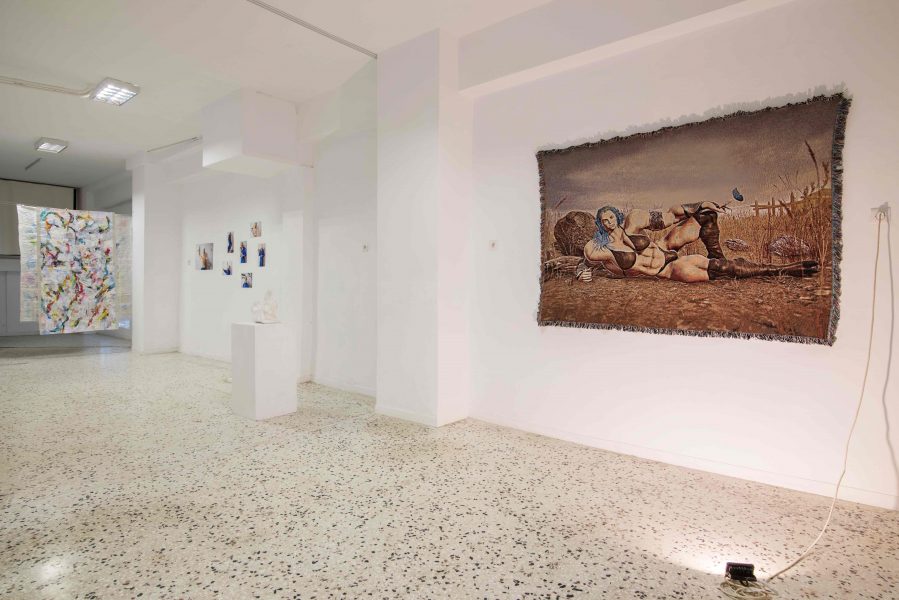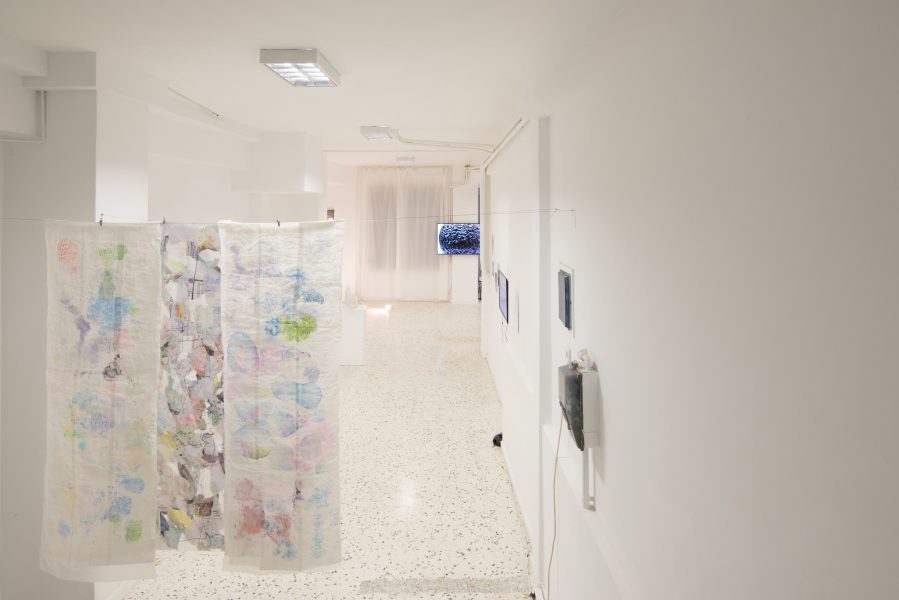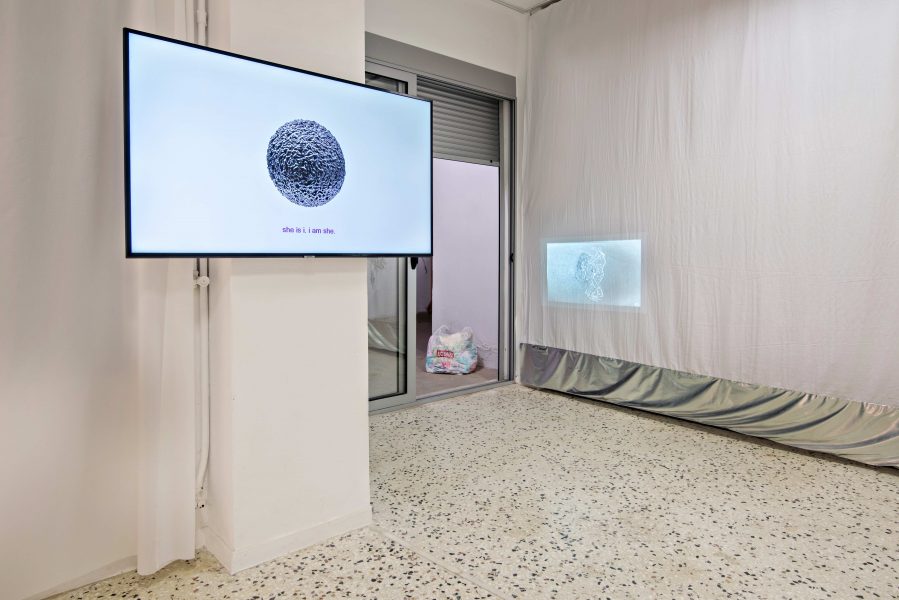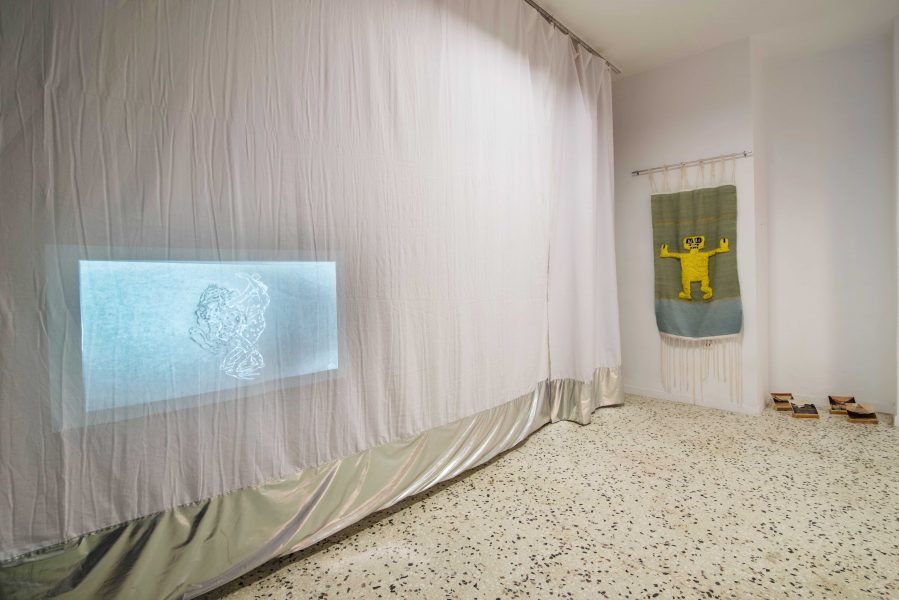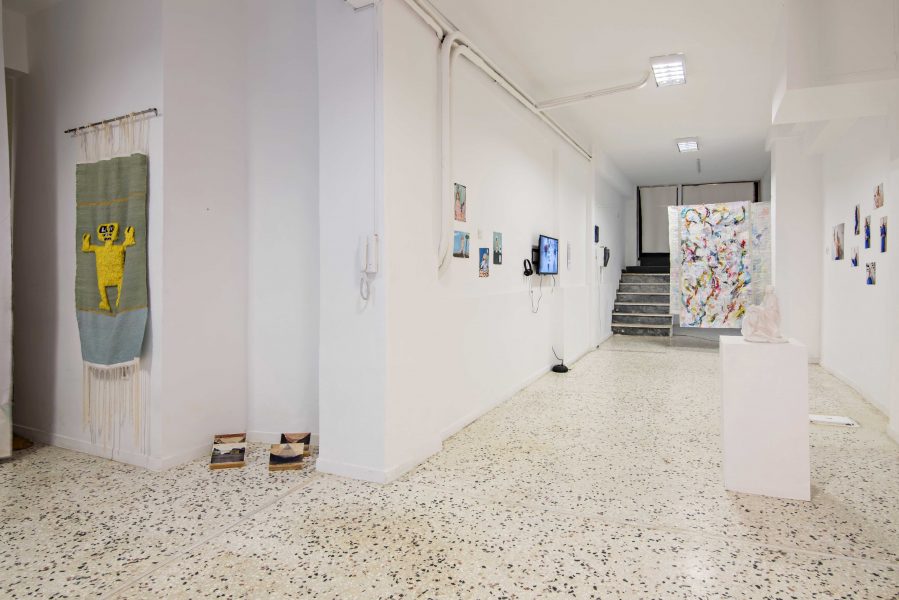“A cyborg world might be about lived social and bodily realities in which people are not afraid of their joint kinship with animals and machines, not afraid of permanently partial identities and contradictory standpoints.”
Donna Haraway, A Cyborg Manifesto (1985)
“All possibilities lay before us. We no longer have to choose. We are encouraged to take on the totality of being.”
Dean Lockwood, Rob Coley -Cloud Time: The Inception of the Future (2012)
“Traditions which appear or claim to be old are often quite recent in origin and sometimes invented”
Eric Hobsbawm, “The Invention of Tradition” (1992)
At the dusk of 20th Century, Donna Haraway introduced “A Cyborg Manifesto” essay in an effort “to build an ironic political myth, faithful to feminism, socialism and materialism” using her words. In order to speak about the capitalist technocratic politics, and the possibilities of socialist feminism engagement with science and technology, Haraway, marks the hybrid organism of a cyborg – one of the highest technological achievements of this time- as a historical signifier of the changing conditions that women are experiencing in the late 20th Century but most importantly, anticipate for in the coming Century.
“Paradoxical e-Traditions” draws on the same ironic attitude, as a project that takes as its starting point topics raised in Haraway’s essay, through the lens of the current sociocultural conditions -whilst in the third decade of the 21st Century. Revisiting the essay at a time where social connection and integration is interwoven with emerging technologies, structuring historical transformations, the invited artists disentangle the paradox of living in a culture of ‘capitalist digitality’; “A culture, defined by the global informatic archive to which we are constantly tethered, fosters a dream-like state in which we can both possess and be everything we wish simultaneously” (as mentioned at ‘Cloud Time’ by Dean Lockwood & Rob Coley). The project gathers work and performances that evoke the evolution of the postmodern human relation with the machine, emerging computational technology and its connection with what is classically understood us cultural temporal tradition within societies.
Challenging the emotional resistance of societies to cancel binaries or accept innovation that questions what is perceived as inherent tradition -depending to one’s region and social life, the participating artists employ different mediums and techniques, with the use of -what is usually understood as- “traditional” practices like embroidery and drawing, as art forms adjusted to a contemporary context of art production and dissemination. Involving those with new media technology such as early and contemporary computer graphics, they highlight the challenges of adapting to the ever-changing needs of today’s societies. A recurring twist between digital and physical, past and future as a reflection of present time. Considering the idea of the cyborg world where “people are not afraid of their common kinship with animals and machines, they are not afraid of permanently identities and conflicting views” the project attempts to examine the social perception of gender identities, the representation of feminine bodies in art history, the gender dimension of artificial intelligence, and ecologies of the future as potentially developing (“invented”) traditions.
The exhibition is in constant dialogue with the spatial context in which it evolves; a self-organized artist-run space that fosters experimental ideas and supports independent exhibitions, recognizing the vulnerability of their production process. “Paradoxical e-Traditions” creates a network of care by reclaiming the relationships of trust needed to make these alternative trading processes work, which is the essence that makes up the art communities both globally and locally. As presented in Nicolas Sassoon’s work, “SKYLIGHT”, which captures through idiomatic visuals, his experiences and memories of the autonomous underground scene in Western Canada (Vancouver BC). Places of gathering that cultivated alternative economic gestures, supported by the local art community in Vancouver, are visualized via pixelated patterns and digital moirés based on the traditional aesthetics and wallpapers of the physical spaces he recreates. Theo Triantafyllidis work “Self Portrait” (Reclining Ork), calls to reflect on the stereotypes of gender identities and representation while it further mediates on the divisions between the digital and the physical, juxtaposing traditional imagery to his NB digital hero in the form of a woven tapestry typically seen in folklore museums.
Correspondingly, in her work “Daemonic Ecran Vivant” Iria Vrettou presents a moving portrait based on the idea of Tableau Vivant, recalling a technique of presenting a moving image of the 19th Century. Vrettou brings her handmade designs to life through a ritual of perpetual transformation that highlights the fluidity between human and non-human bodies, the subjectification of gender, time and space. For her installation, Erica Scourti uses everyday materials such as different types of paper, napkins and advertising leaflets to archive thoughts from her daily life into an open-ended work, both of collective and self-narration that explores representation, emotion, subjectivity and consumerism. Kyriaki Goni’s work, “Eternal U ” addresses issues of care and emotional infrastructure of an imaginary(?) future, where the human-machine relationship extends beyond the current perceived limits of gender, of private ownership of data management rights, of the human and mechanical element, presenting a dependence between basic human needs, high technology and capitalist economy.
Marina Velissioti in her work “Pacific Call”, is using older traditional techniques such as the use of the loom and embroidery, to emphasize on the physical gesture. In her handicrafts, she involves stories of science-fiction and modern reality. Issues of the presentation of different identities through the use of text and image are raised through the work of the late Maïa Izzo Foulquier (1991-2019), Homme Sandwich (Femme Propagande). Maïa presented, throughout her work, a very personal and moving critique of capitalist patriarchy, the perception of the role of the woman in society, and of the institutional and behavioral rules that frame this, from the point of view of the artist, sex worker and activist.
The work of Georgia Fambris is characterized by the idea of deconstructing what is usually understood as “traditional” behaviors for females and the use of household appliances “traditionally” made and typically advertised as tools exclusively for female use. Recalling the history of performance art and the representation of the female body in “A Lexicon of Gesture”, Evann Siebens recreates characteristic gestures of, both famous and forgotten by art history, artists, in a self-narration and vulnerable performance described as a “feminist way of learning” art history. The incomplete representation of the female figure echoes through the work of Marina Karella who creates sculptural images that deal with the void, while they carry an energy of presence with the animal form dominating, In her sculpture “Cat” she creates the illusion of fabric and fluidity.
Special thanks to The Breeder Gallery, and Zoumboulakis Galleries in Athens, and Wil Aballe Art Projects in Vancouver BC, for the collaboration.
Paradoxical e-Traditions
A group exhibition curated by Georgia Liapi
With works by:
Georgia Fambris, Kyriaki Goni, Maïa Izzo-Foulquier, Marina Karella, Erica Scourti, Evann Siebens, Nicolas Sassoon, Theo Triantafyllidis, Marina Velisioti, Iria Vrettou
Opening: April 12, 2022, at 17:00. Exhibition Duration: April 12 – May 25, 2022.
Visiting hours: Wednesday – Saturday, 18:00 – 21:00, and by appointment.
P.E.T. Project Space, Kerkyras 87, Kypseli.
*Kyriaki Goni and Iria Vrettou are SNF ARTWORKS Fellows




